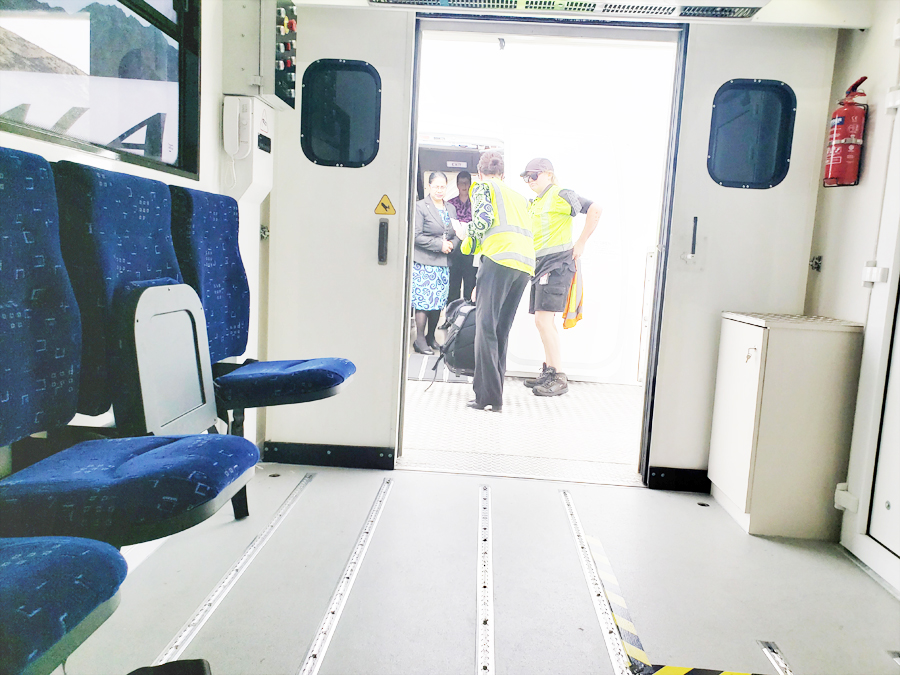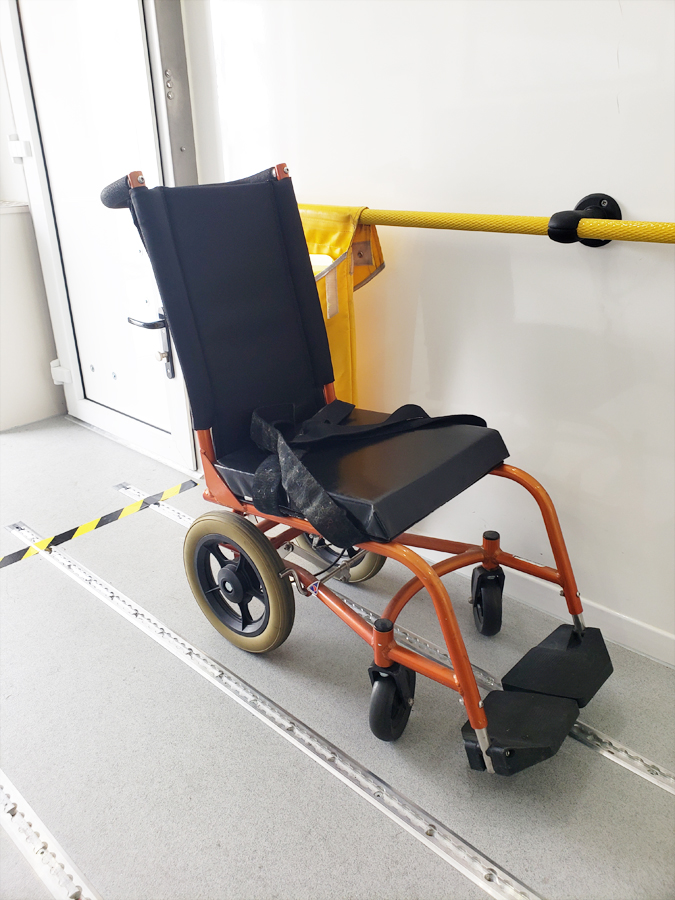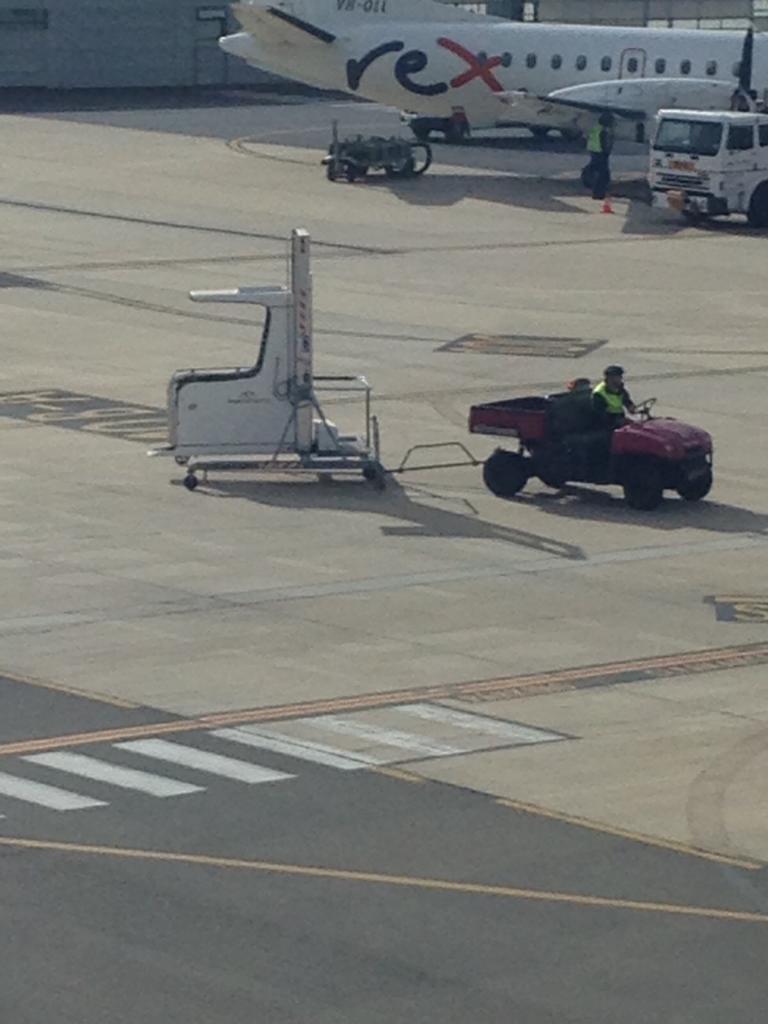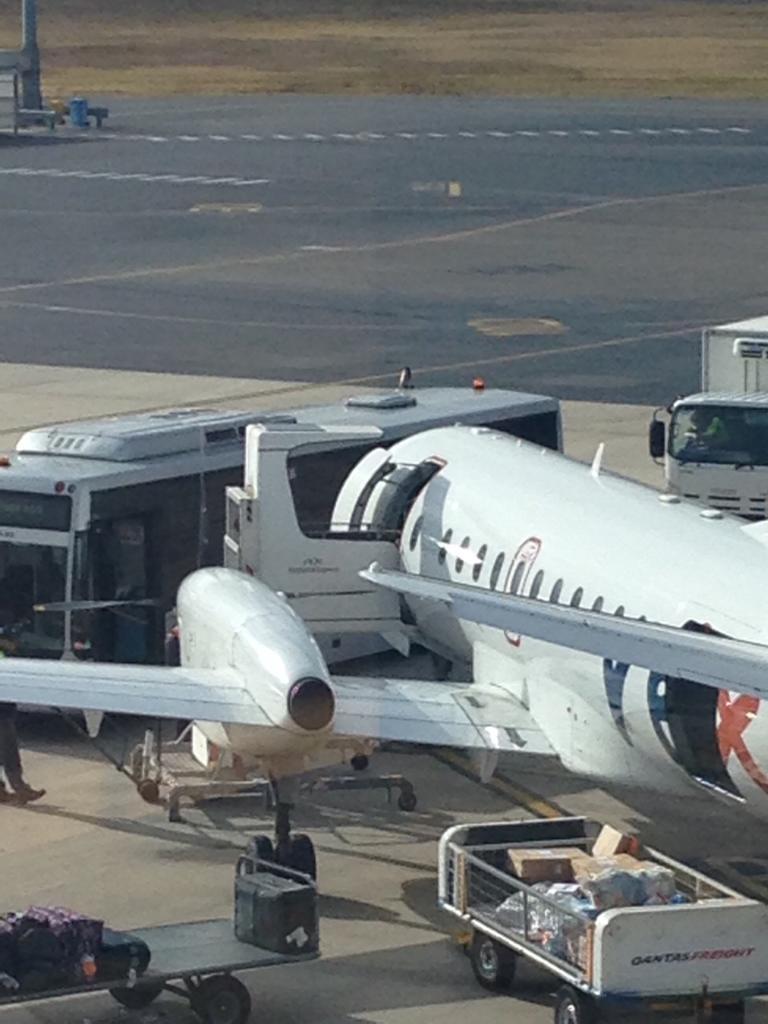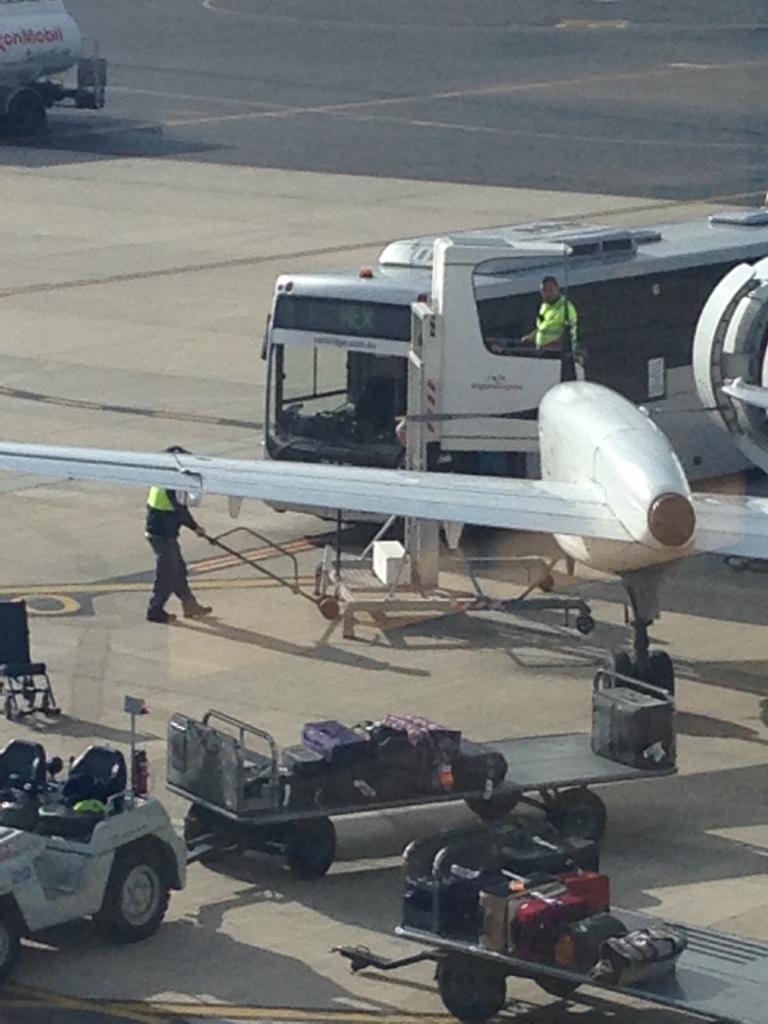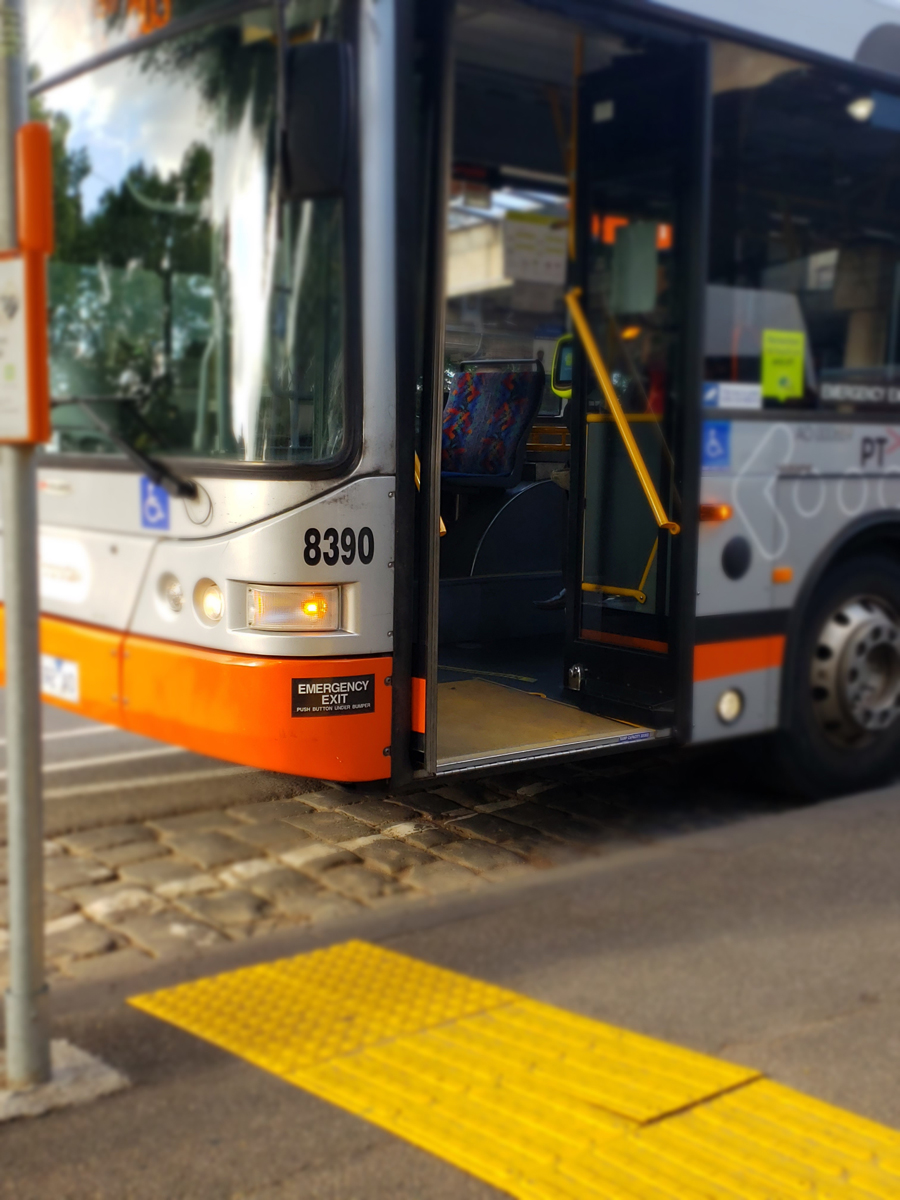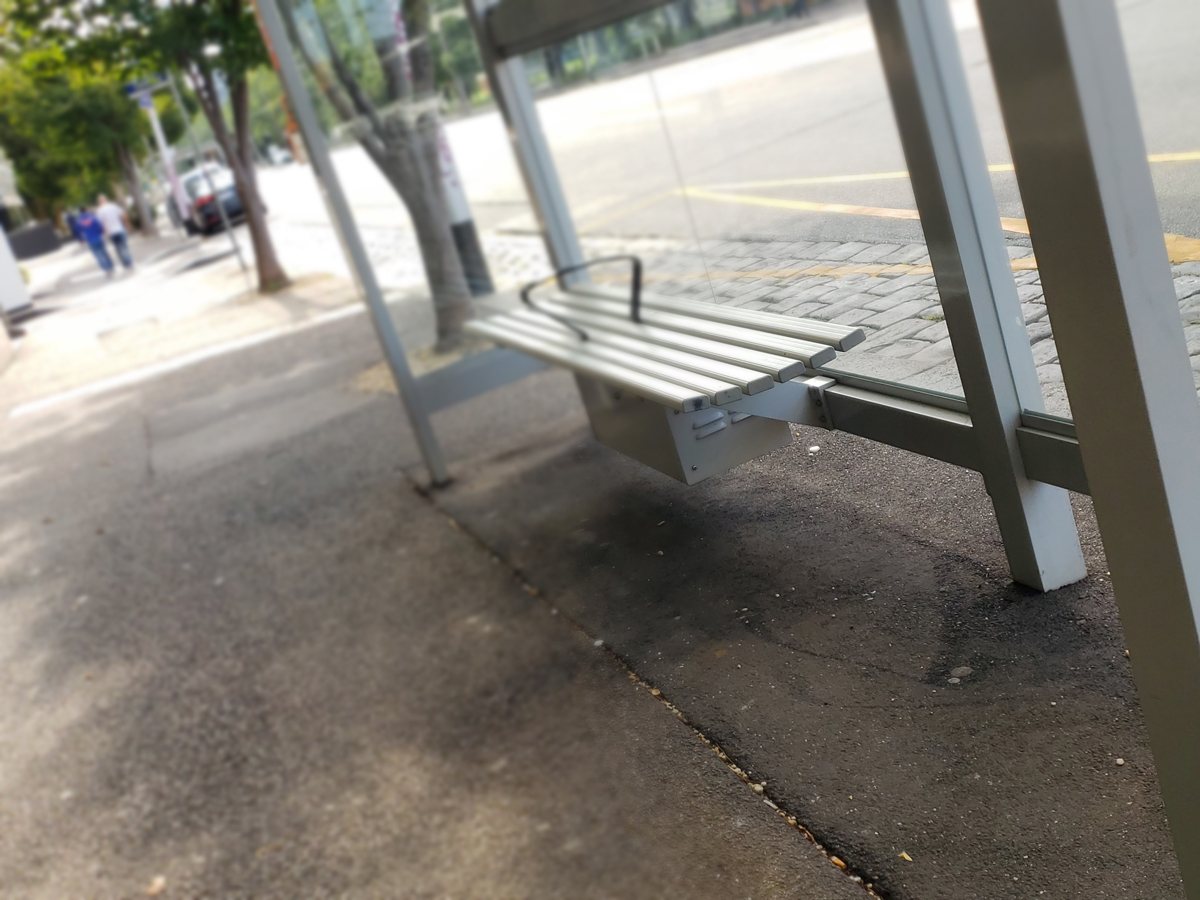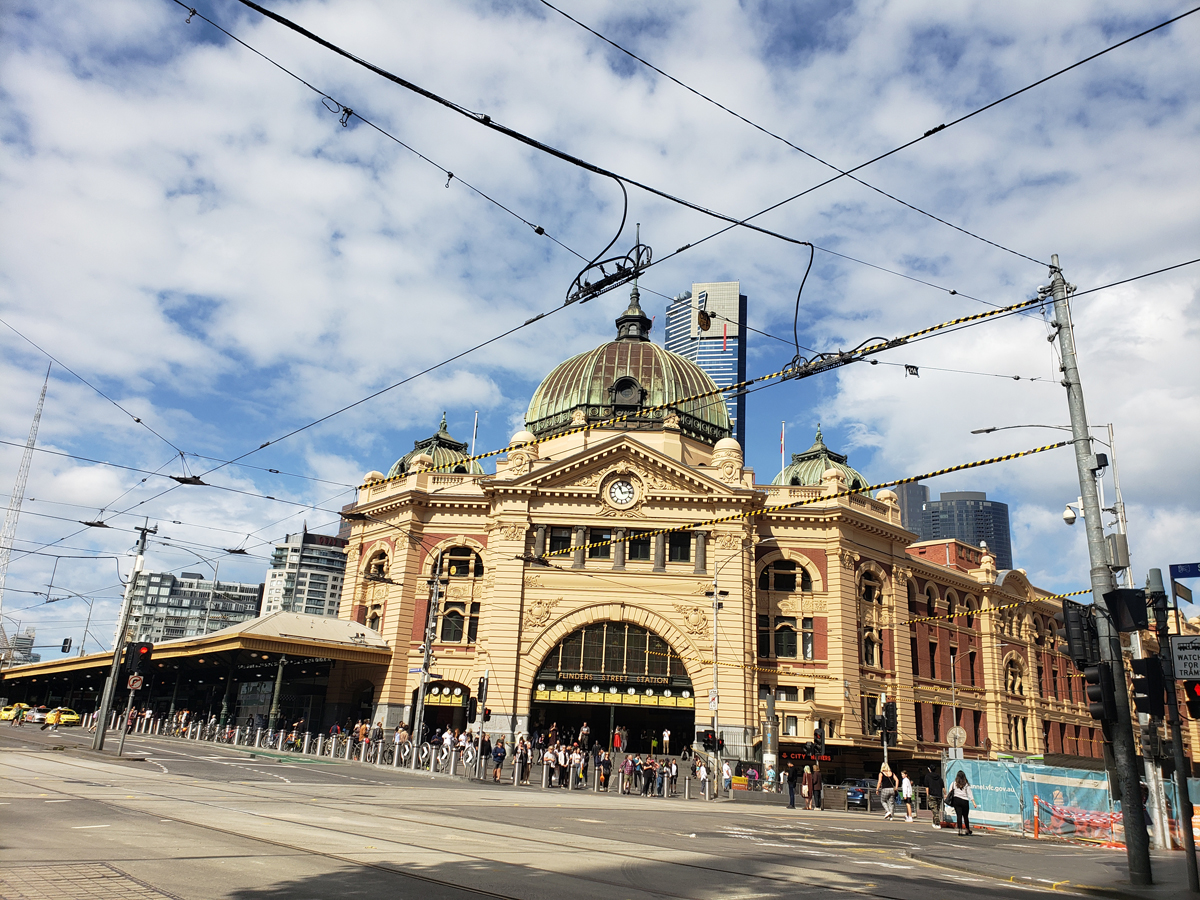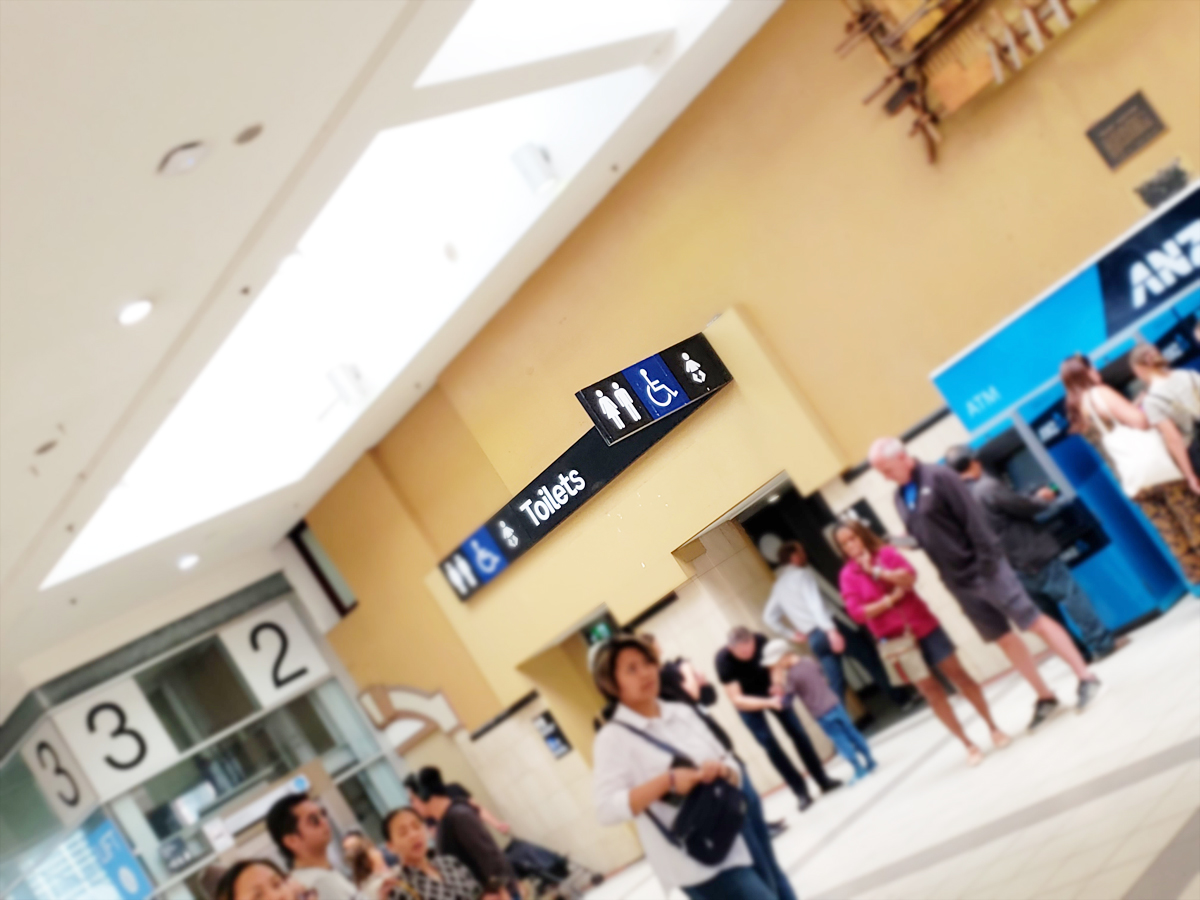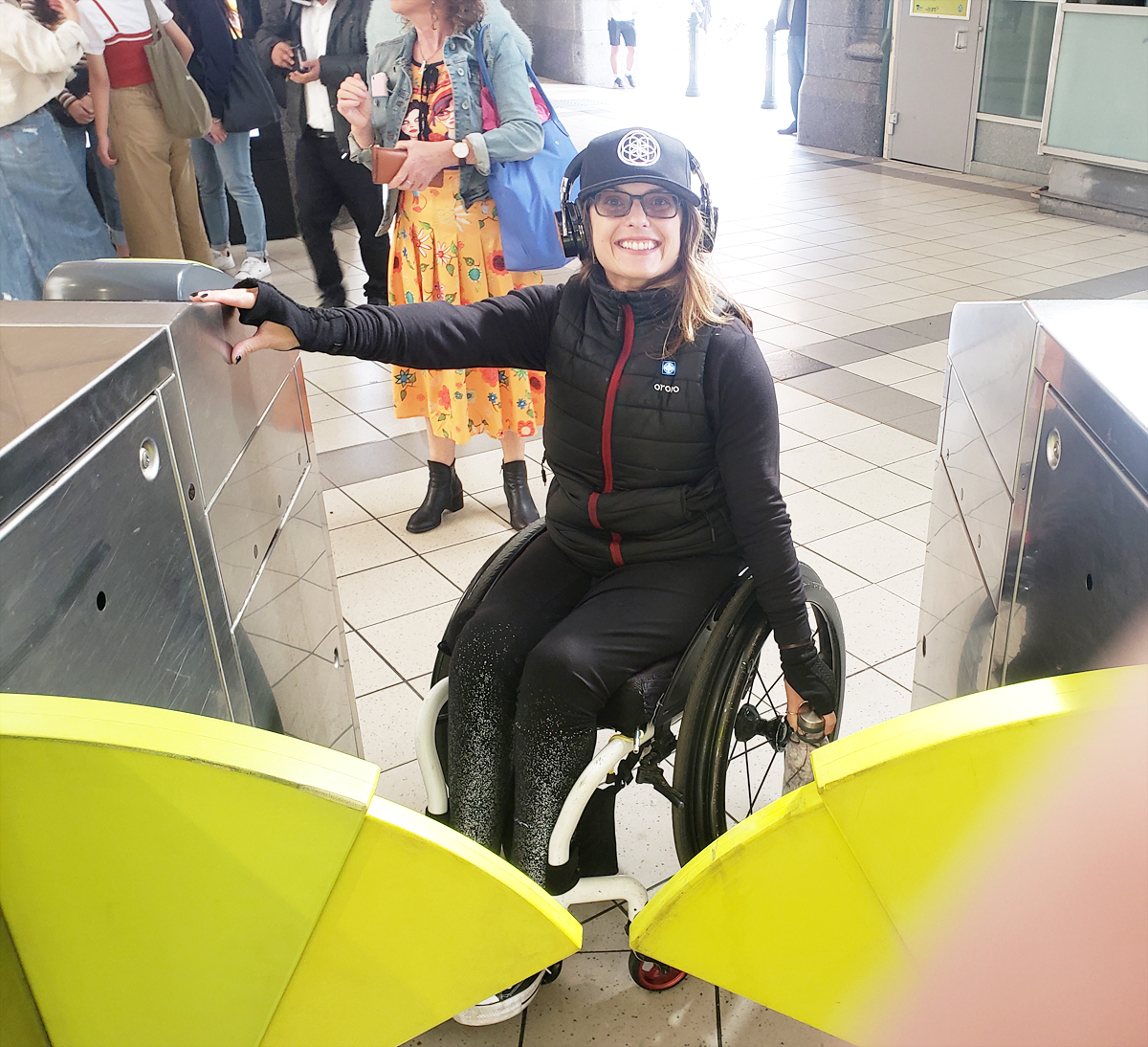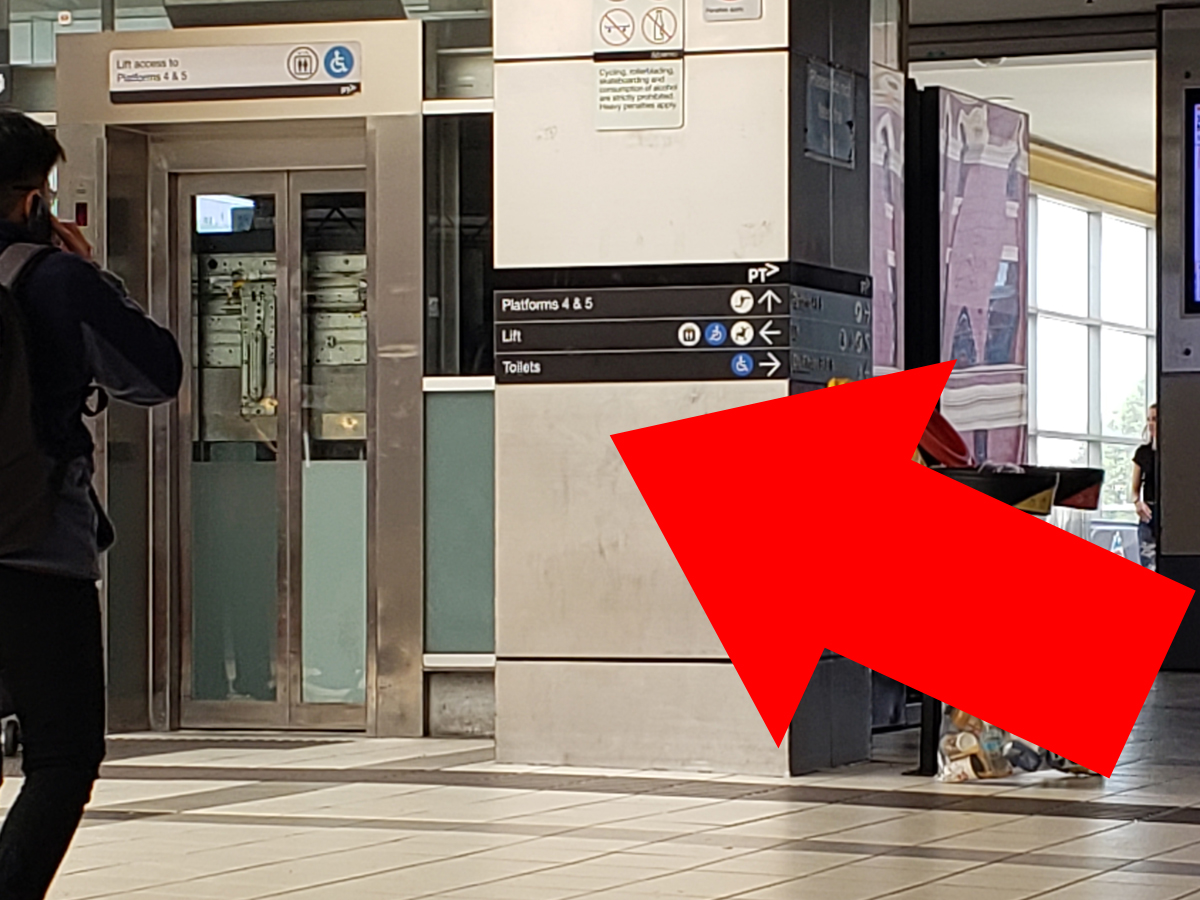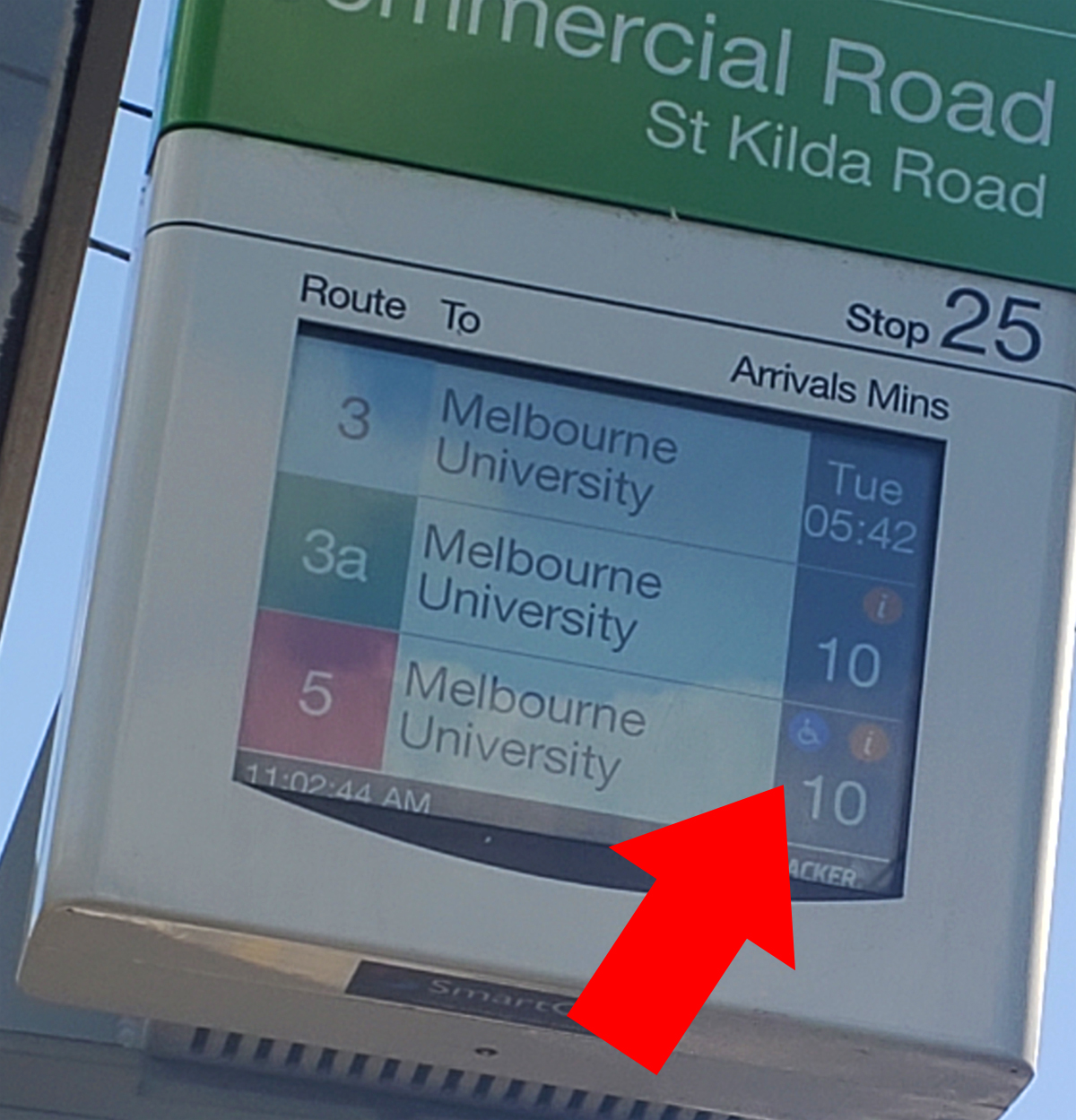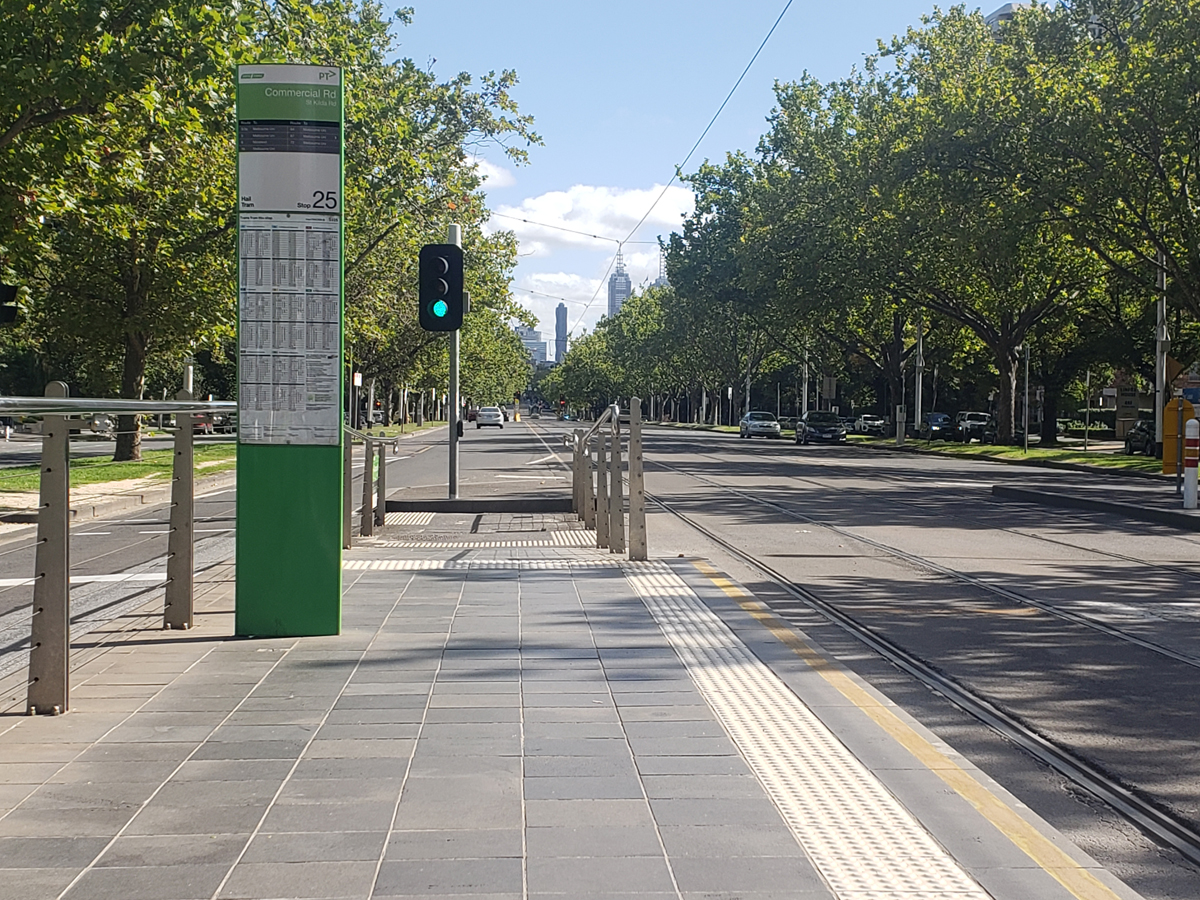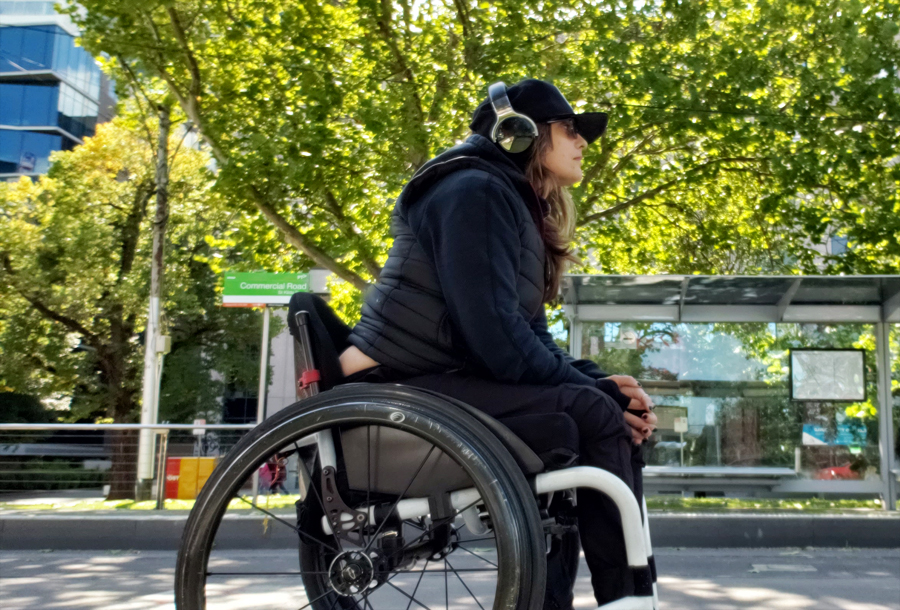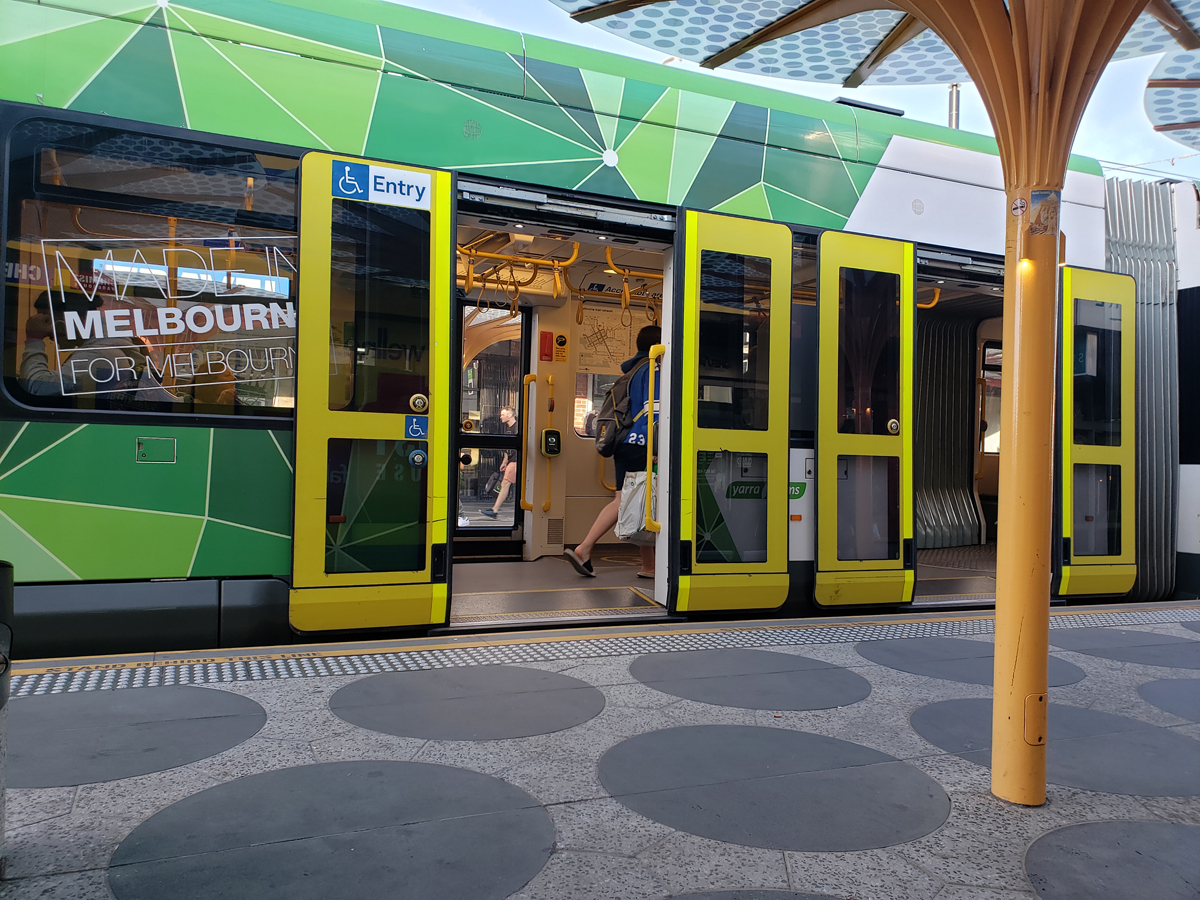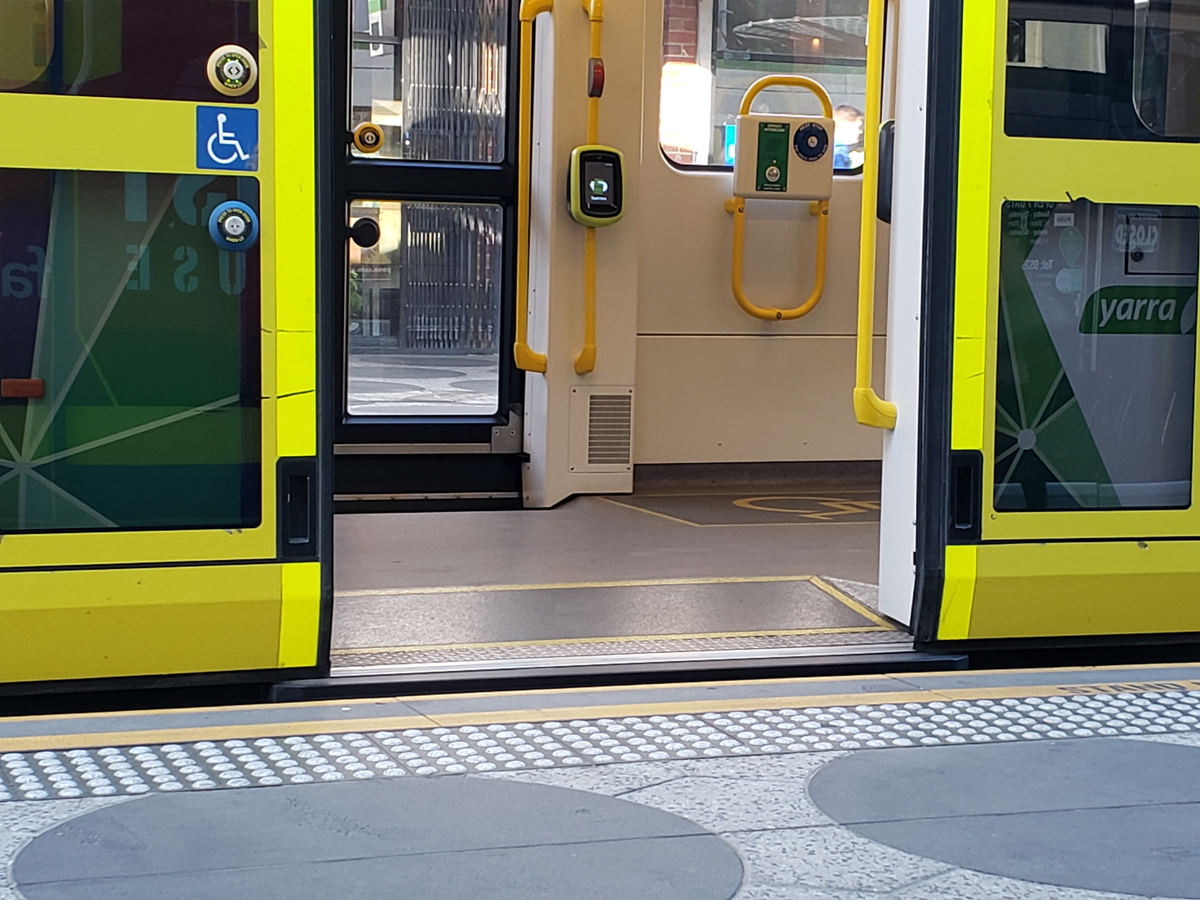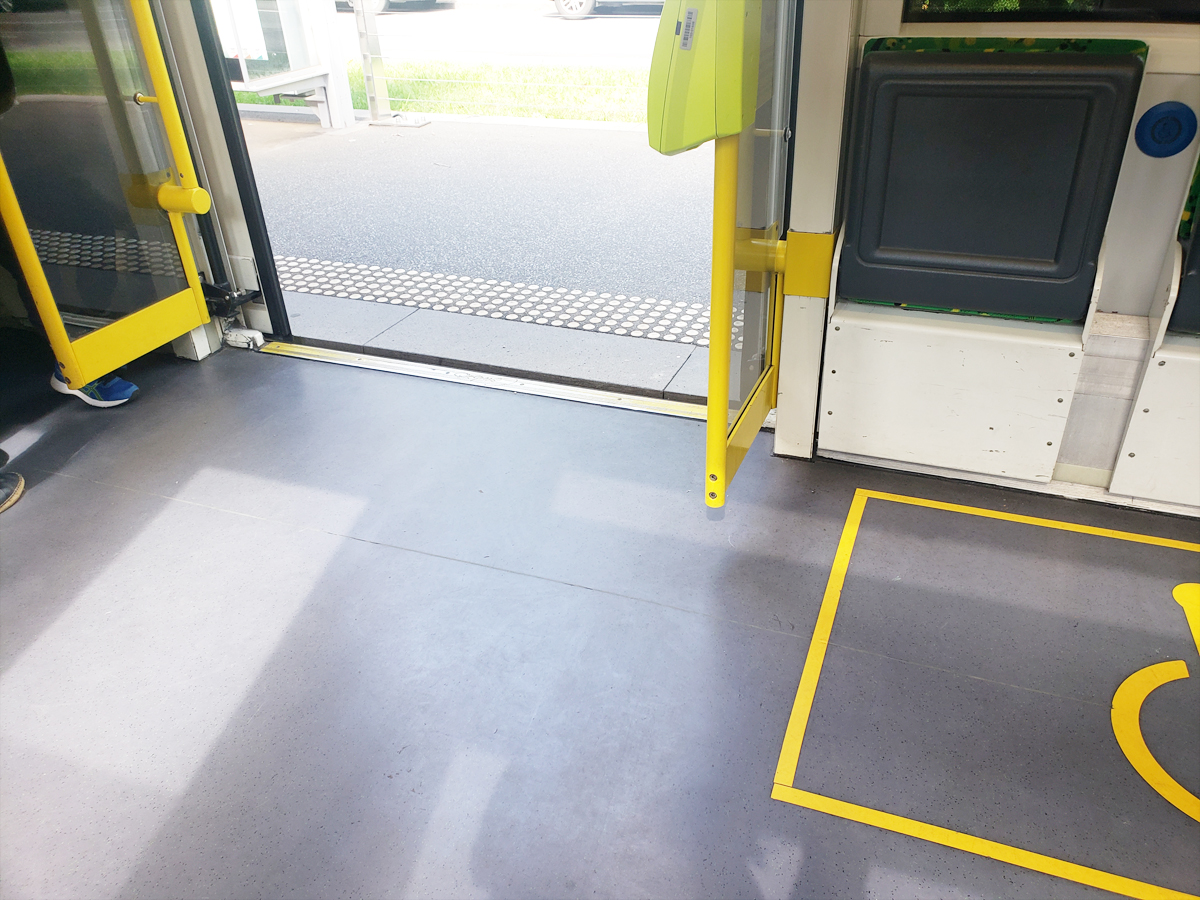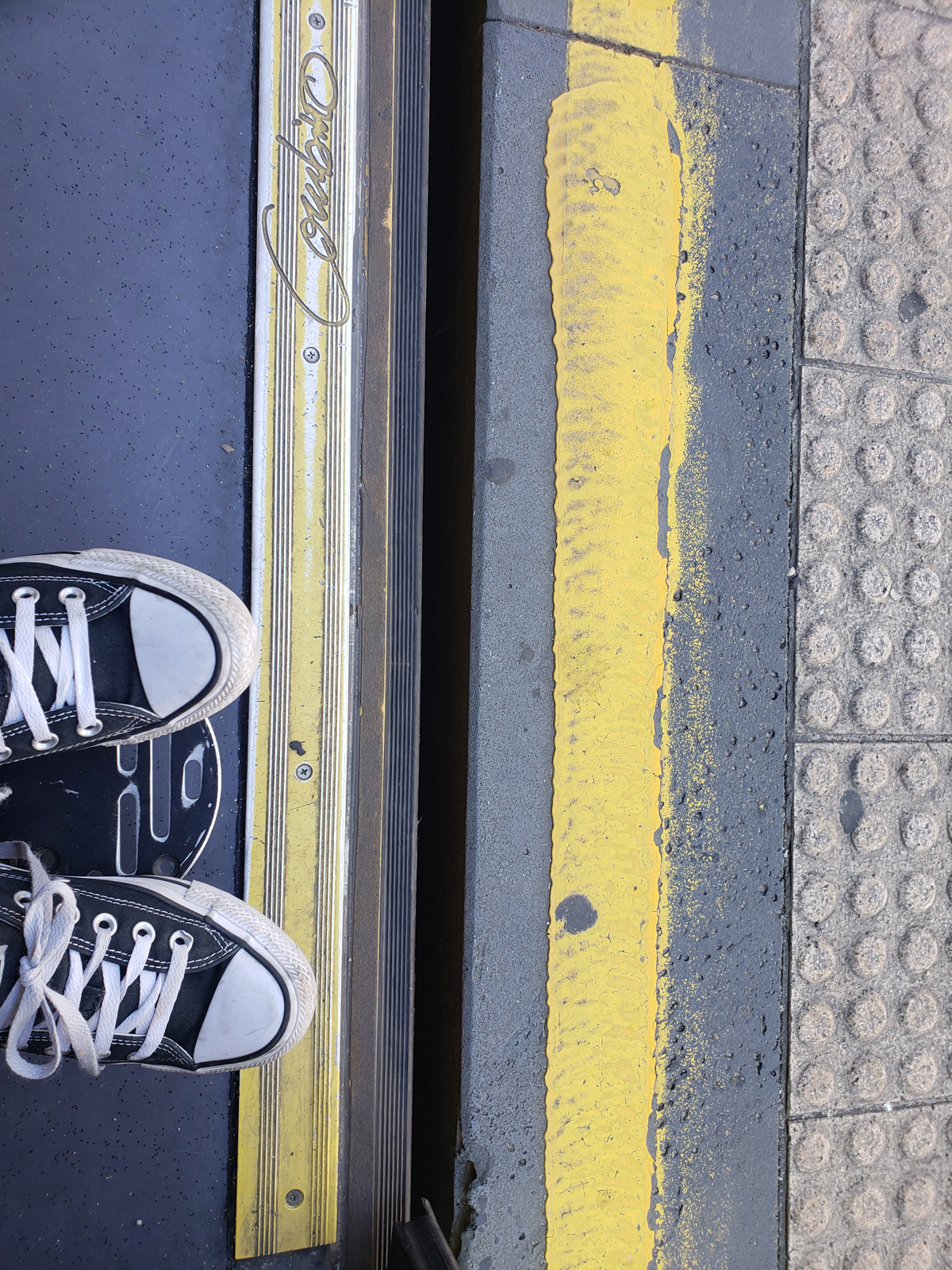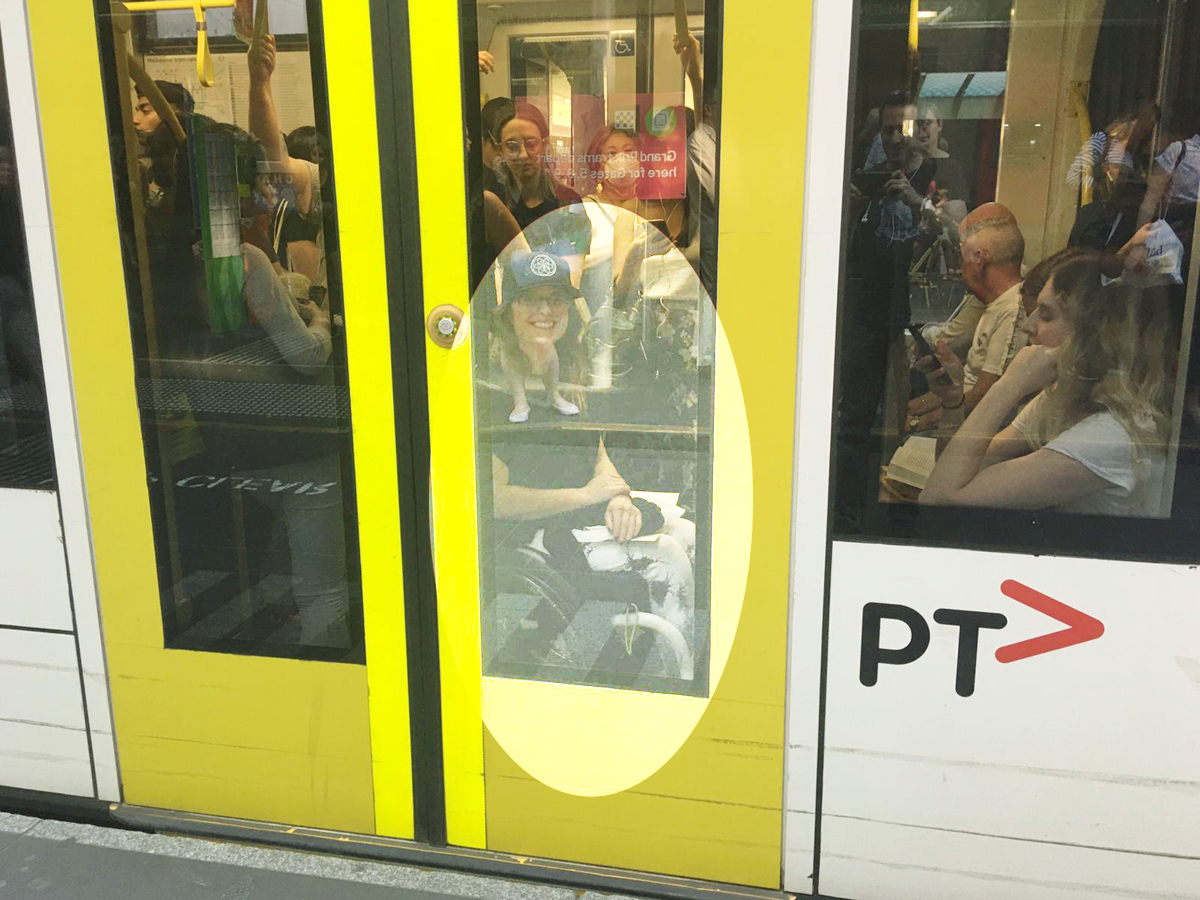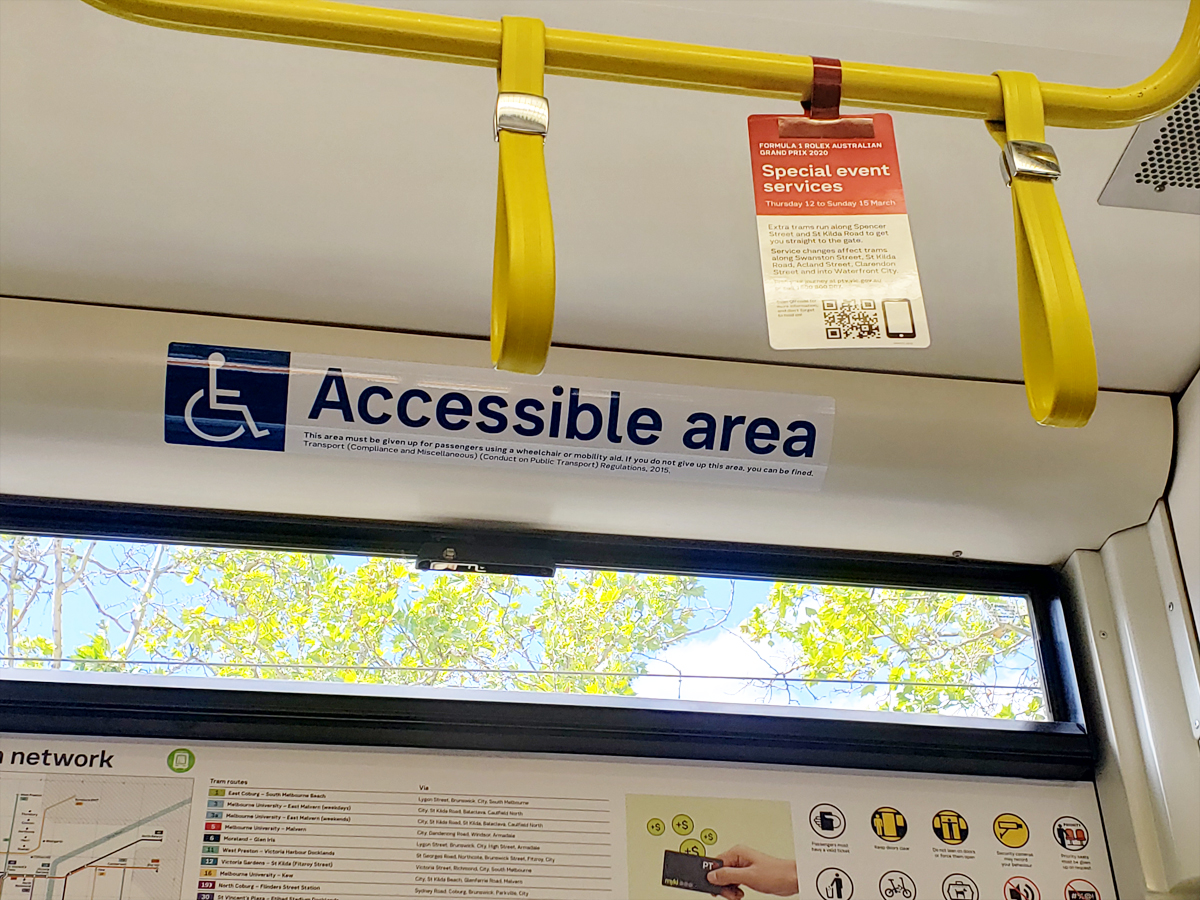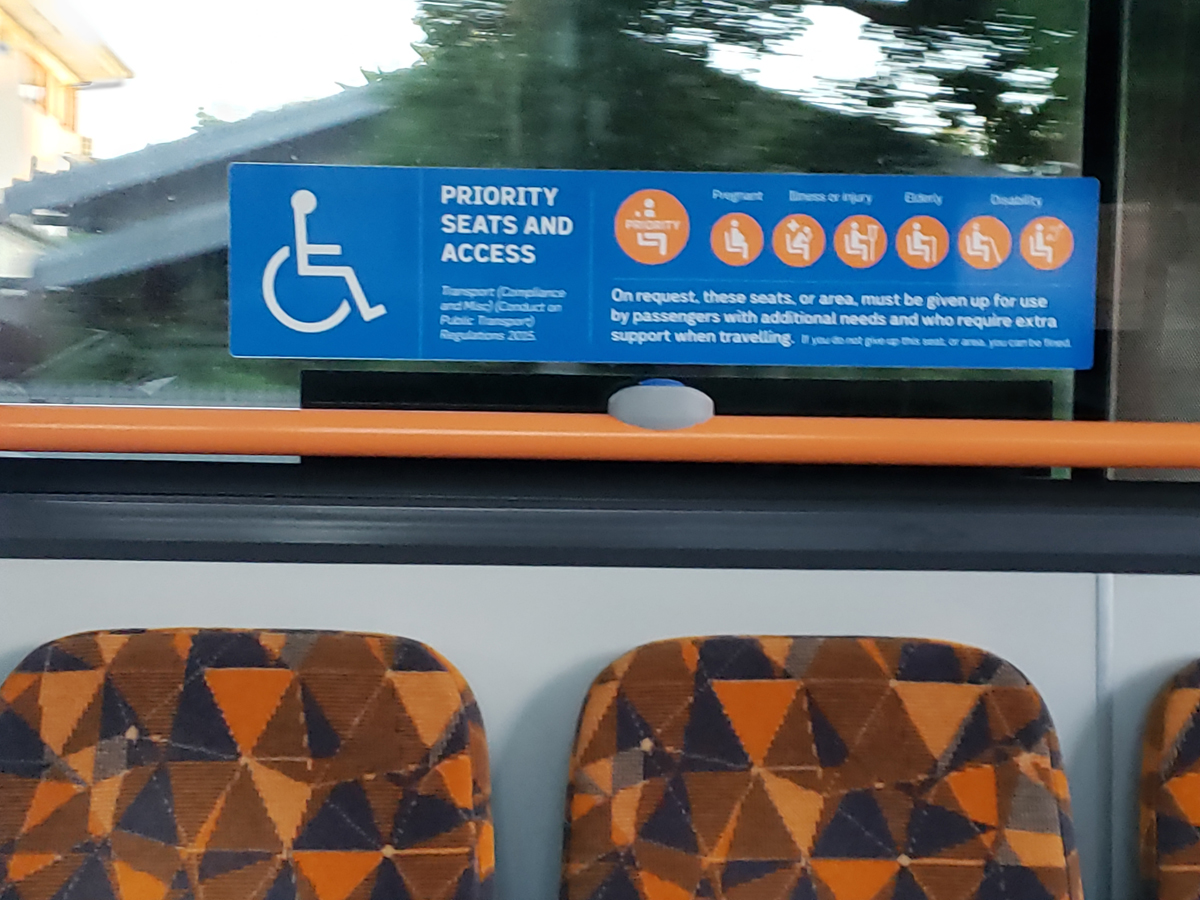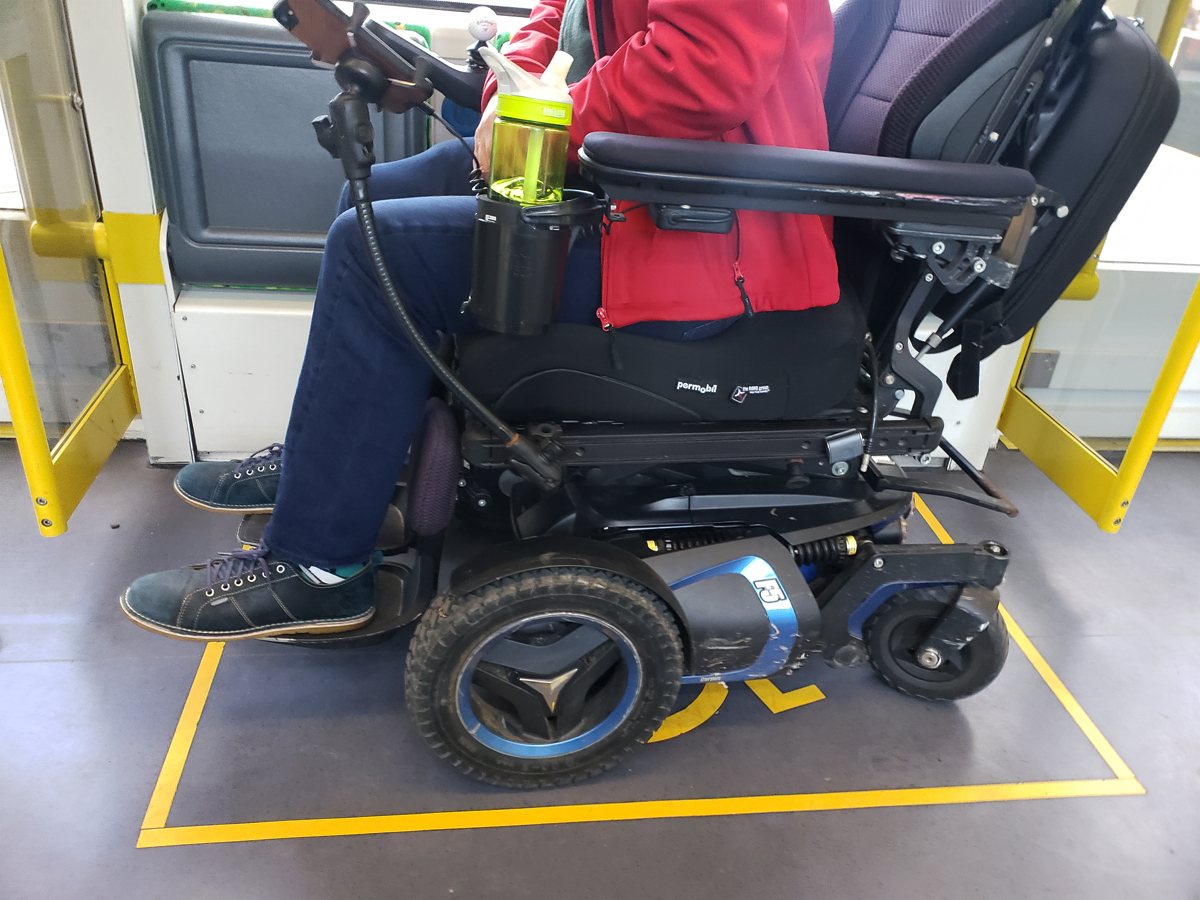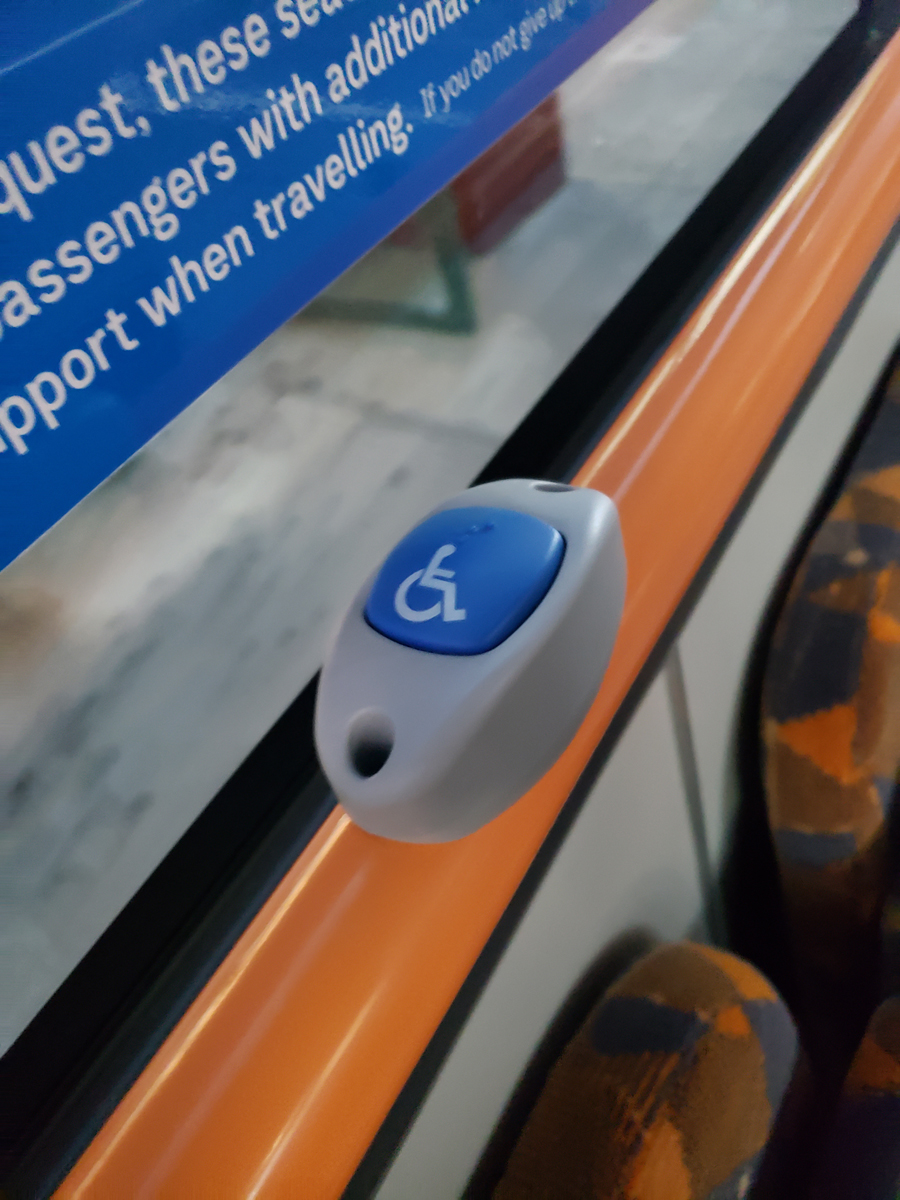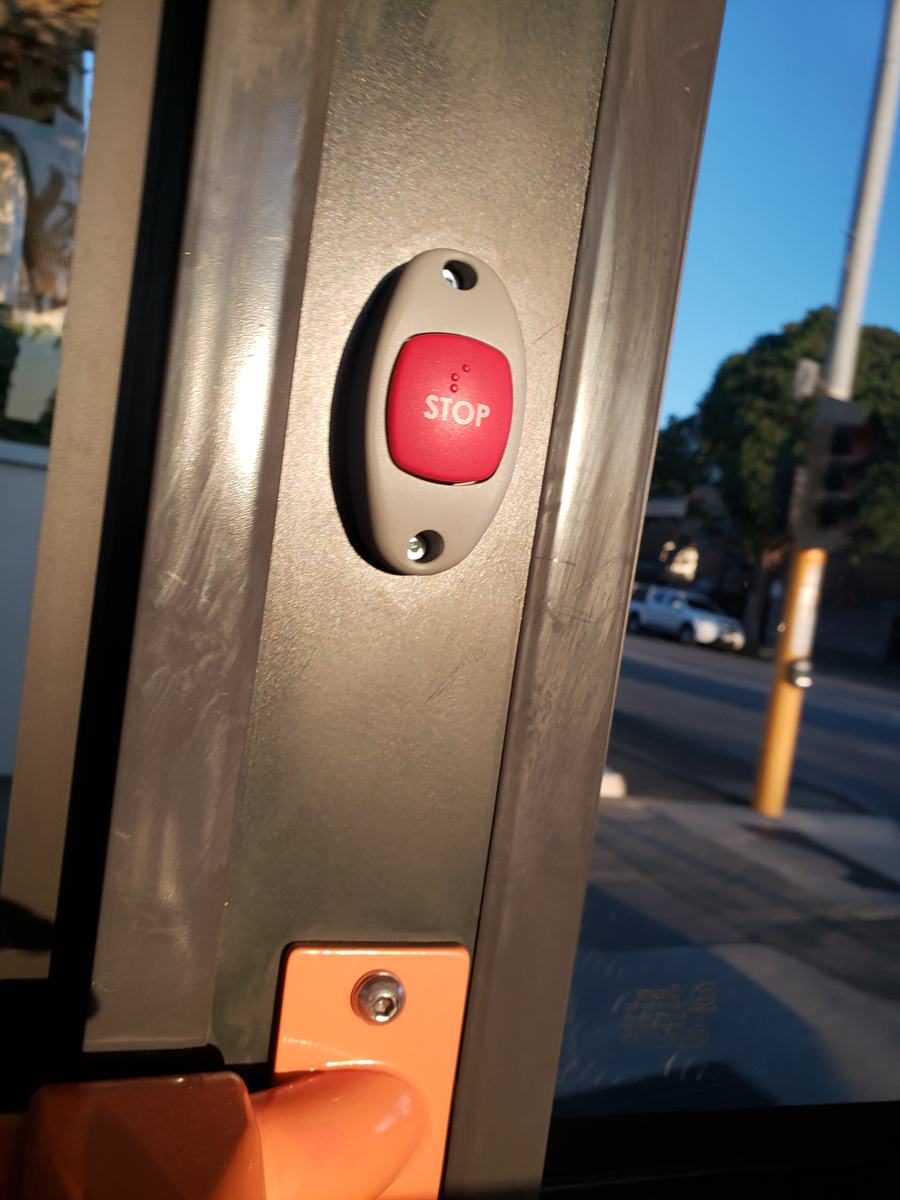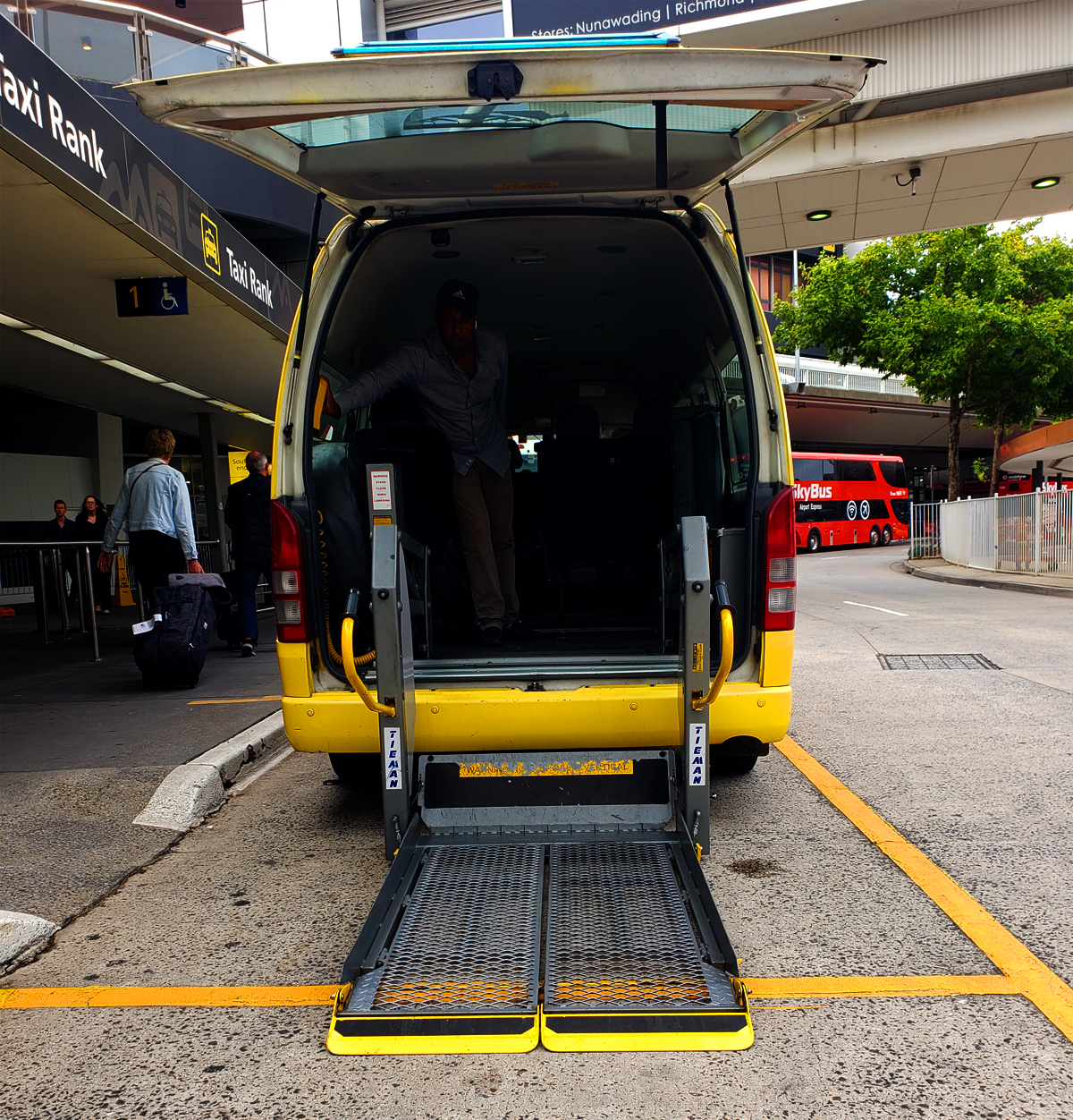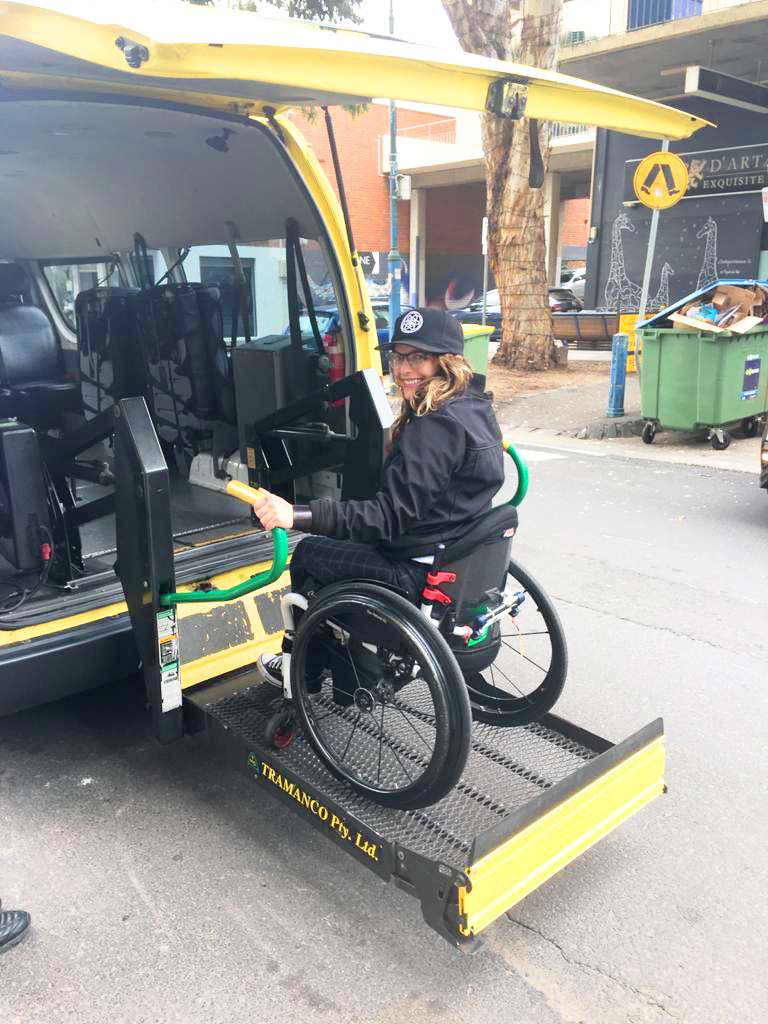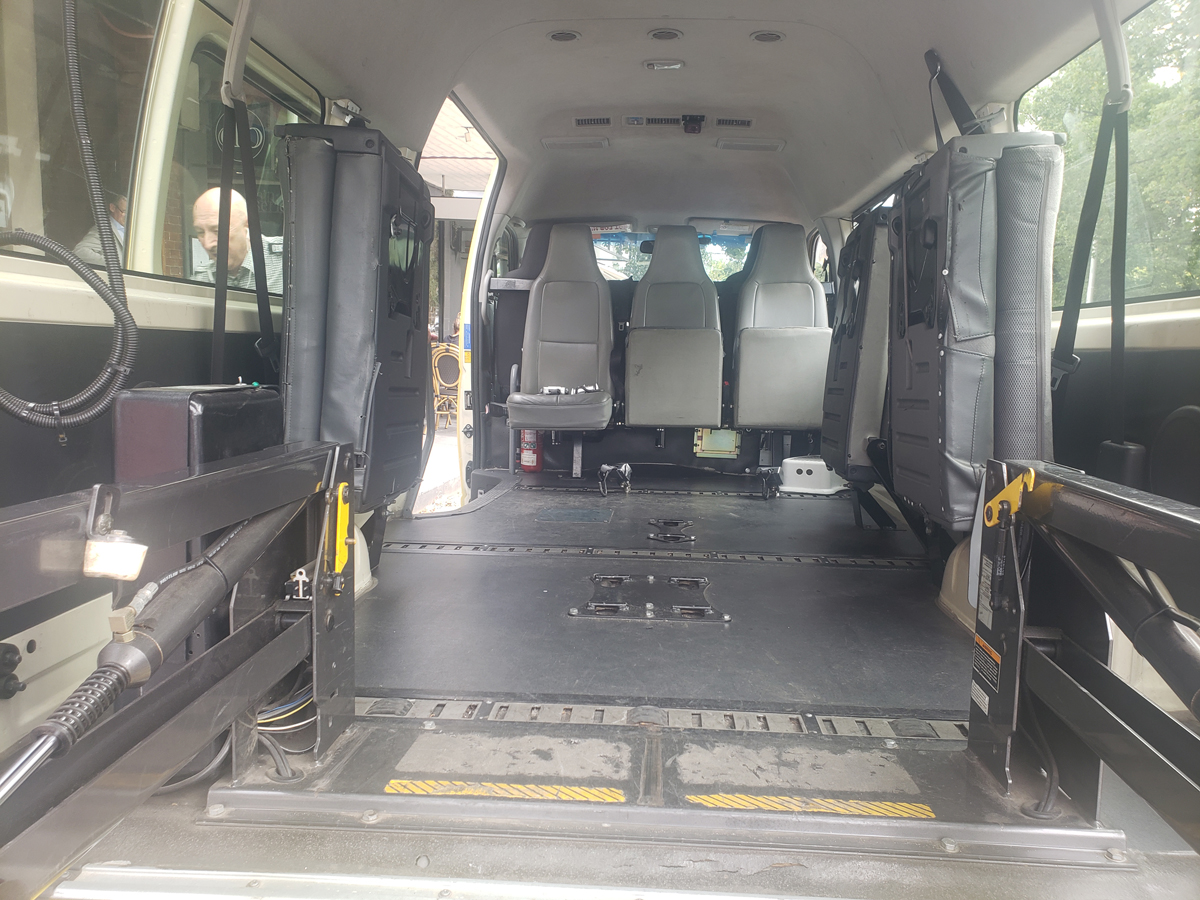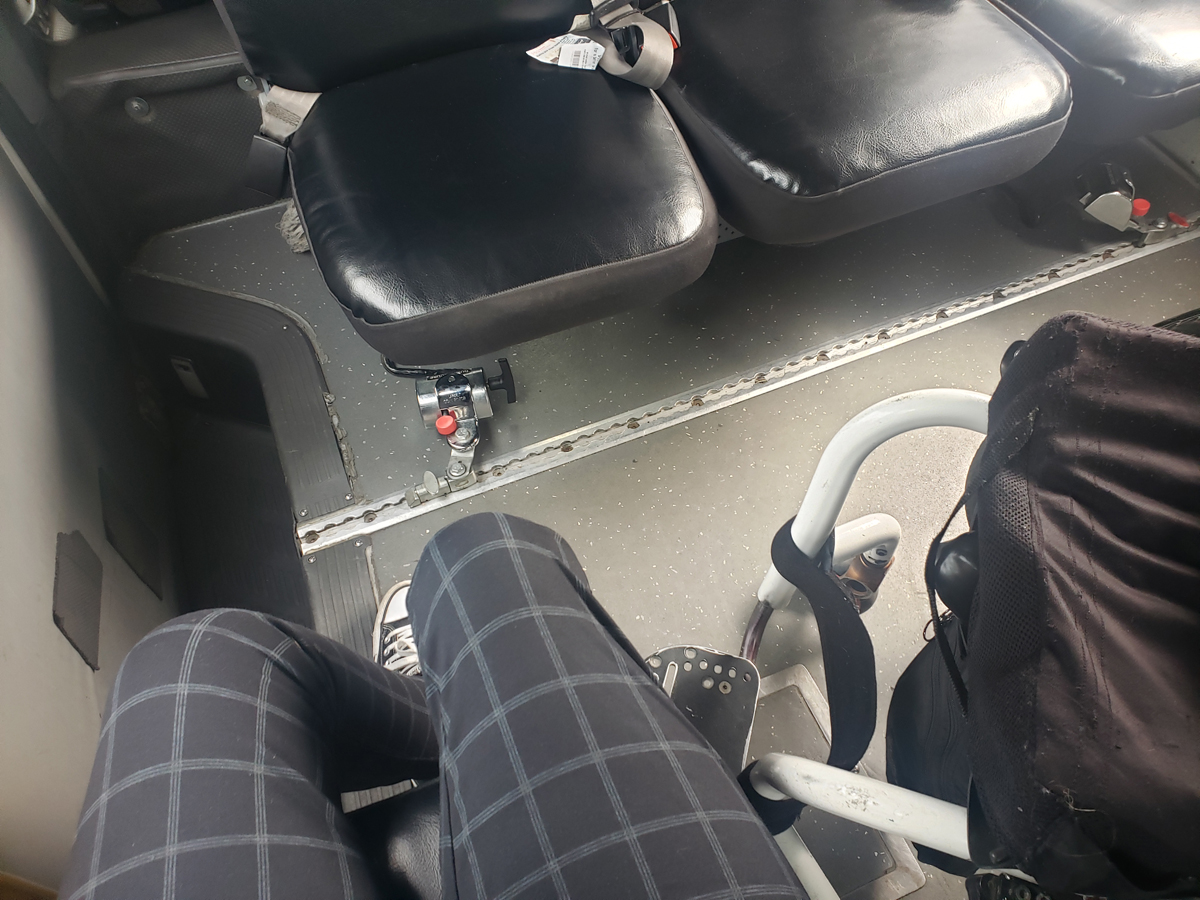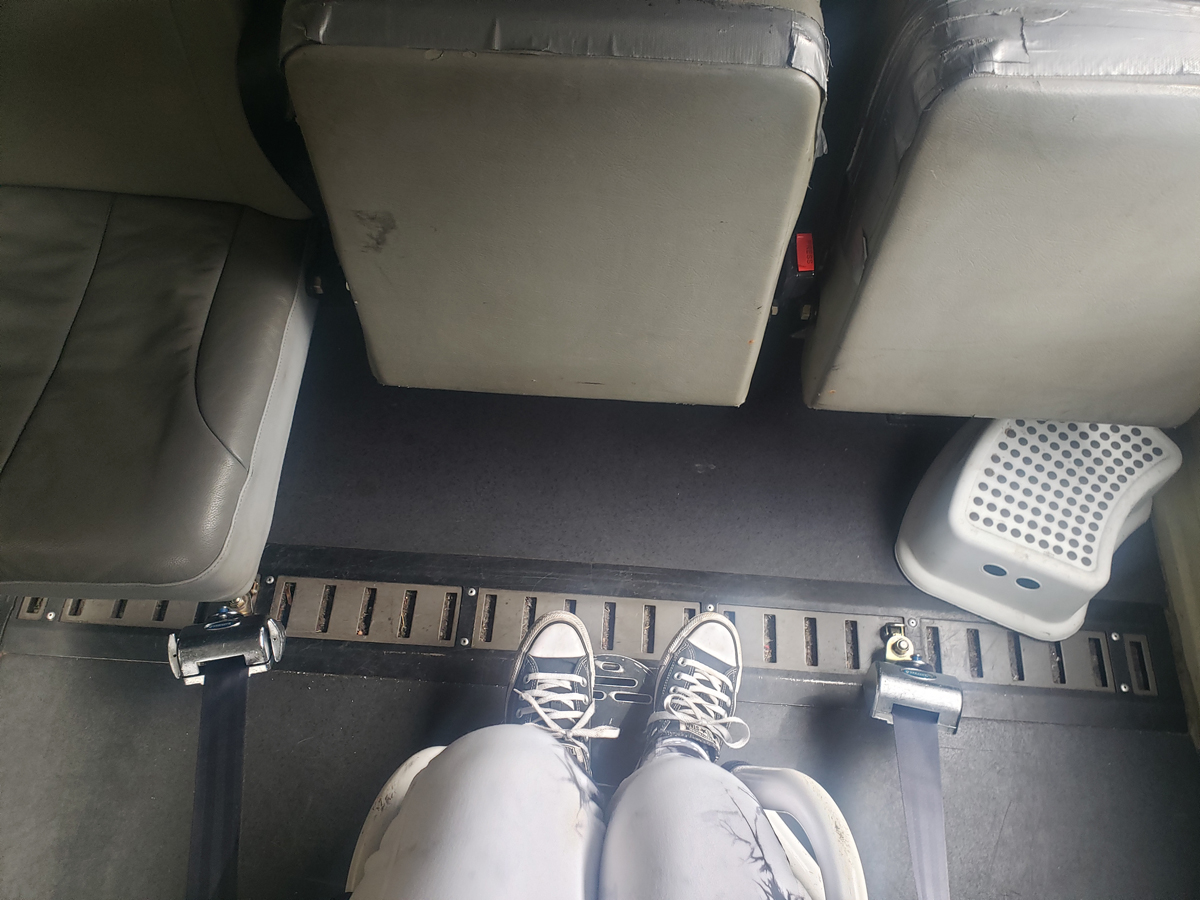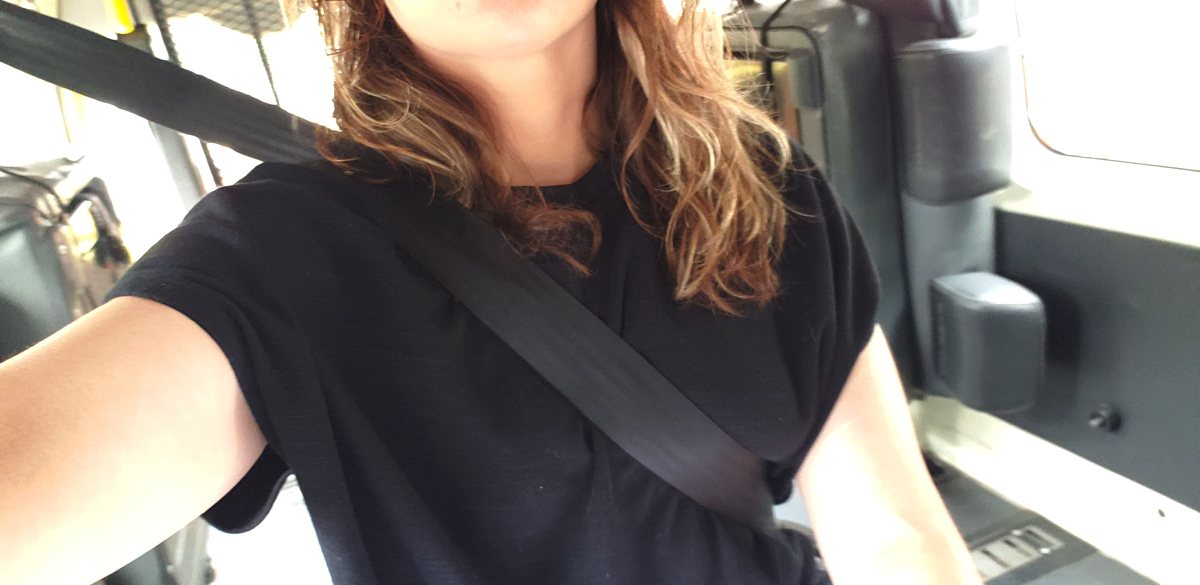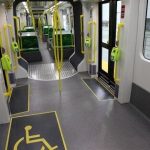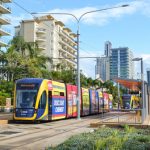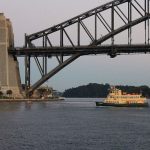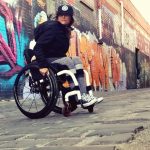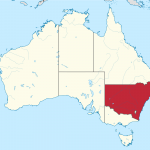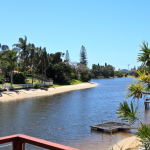It is also is the birth place of Australian rules football with ten of the Australian Football League’s 18 teams in the greater region alone and is the home of Tennis’ Australian Open. It is also home to the most successful rugby league team of the last 20 years, a growing rugby union team, along with three soccer teams, two cricket teams, and many more. It also boasts many wonderful museums and galleries along with the flat water of the Port Phillip Bay and just about a two-hours drive to th
e beautiful waves of the Southern Ocean where the longest running international surfing competition is hosted at Bells Beach. However, though public transport is more ample than most American and other Australian cities, getting around is simply not equitable for all would be riders.
Ground Transportation Overview
All forms of transport take the same Myki card. Unless you have an Australian disability placard or identification, you are not going to be able to get a discounted rate. However, many places will have staff that just let you on board anyway since seeing a person in a wheelchair or other device is usually a fairly obvious indicator to most.
All and all, Melbourne may have the most mass transit in Australia, but it’s reason for “not all of being for everybody” isn’t about preference but is as a result of it is lack of accessibility in the trams that act as the middle ground between heavy rail and busses.
Melbourne Airport (Tullamarine)
When you fly to Melbourne, chances are you will land at the Melbourne Tullamarine Airport, though there is also Avalon Airport which is located between the city’s Downtown area known as the Central Business District (or CBD for short) and the regional city of Geelong.
What you will instantly notice is that most airports, potentially all, have wheelchair lifts should there be no direct aerial bridge from the terminal to the aircraft. These lifts are specially designed forklift-like vehicles that those with limited mobility will be able to roll or walk onto and then be lowered to ground level either to go directly into the terminal or onto an accessible shuttle bus with the rest of passengers. They are a wonderful addition to transportation at airports and I’ve personally seen them in use even in regional and remote airports such as the one on Kangaroo Island just across the bight from South Australia’s capital of Adelaide.
Once in the terminal, there are plenty of elevators/lifts that are accessible. Terminals are numbered 4, 3, 2, and 1 and are fairly easy to transfer between though they do cover a fair amount of distance at times. There are inter-terminal shuttle busses as well.
Skybus
To get to the CBD from the airport, you can go the taxi queue or purchase a ticket on the Skybus (see separate taxi section for details). The Skybus is a double-decker, has Wi-Fi, and is accessible. From the airport, it will take you directly to Southern Cross Station via the Tullamarine Freeway. As will be explained below, Southern Cross Station (formerly known as Spencer Street Station), is the main local and regional rail hub of the city. They also have busses from the airport to St Kilda, Southbank Docklands, and Peninsula but the last is not guaranteed to be accessible.
On their website, they state that, “The SkyBus Melbourne City Express, St Kilda Express, Southbank Docklands Express and Avalon Express buses are mobility-enhanced, providing excellent access for wheelchair passengers. Please call SkyBus on 1300 759 287 the day before you travel to confirm if you need wheelchair access. We will endeavor to accommodate for wheelchair or mobility impaired access on our Peninsula Express bus, please contact us during office hours, in advance of your travel to ensure we are able to meet your requirements.”
V-Line and Metro (Regional and Metropolitan Heavy Rail)
For both the V-Line and the Metro, there is “Step-free access at all stations except Heyington” according to the PTV’s website (Public Transport Victoria).
The V-Line are the traditionally purple diesel-fulled carriages that take people to and from Melbourne downtown area. This is known as the Central Business District but more commonly referred to as the CBD as is the case with many commonwealth countries. The trains will stop a Southern Cross Station primarily and then go to near CBD stations such as Footscray, Richmond, and North Melbourne before going off into the further reaches of Victoria.
The platforms are not uniform with some having larger gaps than others that can prove to be a challenge of impossible for those with heavier motorized chairs but all trains have ramps that will be provided by the train’s conductors and/or drivers. Platforms are usually marked with where those that need assistance are to wait. Usually this is at the front carriage nearest the driver but this can change depending on the model of train. If there is a diesel engine that is separate from the carriages, then the next nearest car is usually the place to wait. Not all stations have attendants but the larger ones do.
Similar but easier to navigate is the Metro, which makes a full loop around the CBD before going out into Melbourne’s suburbs. The carriages are all electrified and, though there are slight differences in the configuration, there are no independent engines pulling the carriages. This means, you will always be seen by drivers who will come out and assist anyone in need with a ramp onto the train. Unlike the V-Line, which only stops at Southern Cross Station with some service at Flinders Street Station while in the CBD, the Metro trains will also stop at Flagstaff, Melbourne Central, and Parliament stations.
It is a little confusing but the direction of train travel within the city loop of the CBD does change in the early afternoon. It is very important that, if you always look at the digital screens to see which platform your train will be on and which direction it is heading. The easiest thing to do is download the PTV app, go to settings, and set your options based on your level of accessibility needs. Not only will this provide the platform details of your train and the live time that it will leave, it will also customize your travel route based on your needs with other forms of transportation around Melbourne as described below.
Trams (Streetcars)
As mentioned, Melbourne did not rip up its tram tracks like most cities did and this has led to some key advantages and disadvantages. Mainly, despite the Disability Discrimination Act of 1992 requiring that 90% of the tram network be accessible by 2017, as of 2020, only around 25% has accessible tram stops. Compounding the issue of broken promises, the few trams that are accessible do not always have an accessible platform. Unlike kneeling busses with flip-top ramps, even the newest trams require a proper platform.
There is a free tram zone around the CBD and a few other areas but the chances of getting an accessible tram and accessible platform are not in anyone’s favor for those with a disability or even a stroller. Many have very steep steps that many mobility limited people that still can walk would not be able to ascend. Getting around by tram is not recommended but, there are times where it could be the only mass transit option since the assumption by government has been that tram service does not require bus service near it. In these cases, a taxi or rideshare may be your only option.
The best strategy is to download the aforementioned PTV app but also the Tram Tracker from Yarra Trams, go to the settings, and customize it to your needs. The good news is that the accessible trams do have reserved spaces for those in wheelchairs but they can be extremely packed and it may be difficult to even get on board. It is pitiful advice but it is the best and only advice in this limited situation.
Bus
Nobody likes to ride the bus when traffic free heavy rail and guide-way riding trams have a right of way over cars but, if you do, good for you. Bus timetables are relative and most currently do not have live GPS tracking. However, they are accessible, can kneel, flip out a ramp, and get everyone on board. They just happen to be very slow at times though, if you are off hour, you may be lucky if you’re on board or unlucky if you show up on time to your stop and the bus has already passed. It is pretty run of the mill for anyone who has lived in a city before and the situation here is no different.
Taxis and Cars
Taxis in Melbourne can also be referred to as a WAV (Wheelchair Accessible Vehicles) or a WATs (Wheelchair Accessible taxi). While it’s always best to book in advance, booking the day of is possible with a reasonable wait. Taxis are available 24-hours a day, 7 days a week.
Wheelchair accessible taxis are equipped with a wheelchair lift/hoist in the back. Seats are removable, so a passenger can choose to stay seated in their wheelchair or transfer. Multiple wheelchairs can ride together, but generally the vehicles can carry about 11-14 passengers. Wheelchairs are securely tied down, so they don’t move while traveling as well as a passenger seatbelt that goes across the chest. The following is a list of wheelchair accessible taxis in Melbourne, Australia.

